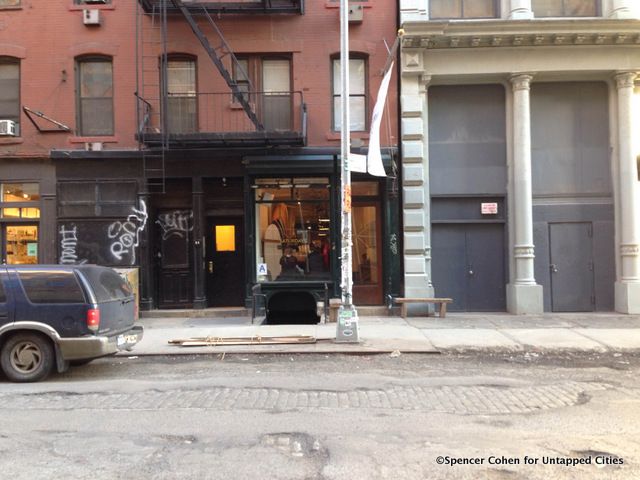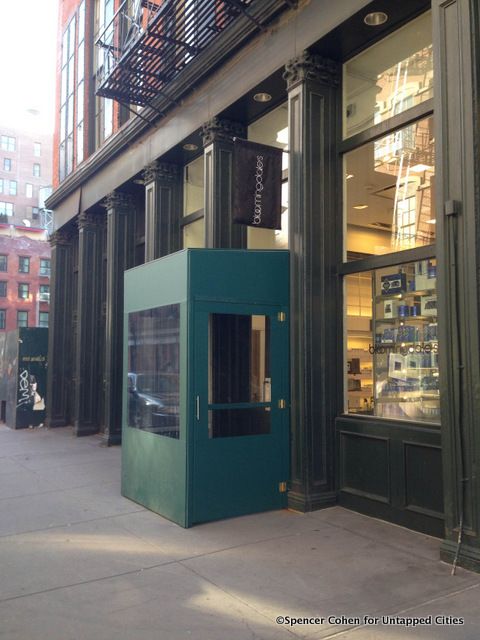Last-Minute NYC Holiday Gift Guide 🎁
We’ve created a holiday gift guide with presents for the intrepid New Yorker that should arrive just in time—


Crosby street is unmistakably part of the fashionable neighborhood of Soho—it boasts a selection of chic stores housed in old factories—but is a departure from much of the neighborhood in its quaint nature. Crosby Street is one of our favorites in the city–it harkens back to the bygone days of an old artistic and industrial Soho, one not inundated with high end chain retailers. The street is only six blocks long, starting at Bleecker Street to the north and ending at Howard Street, a street just north of Canal, to the south. The street was named for the 19th century millionaire and philanthropist William Bedloe Crosby.
The peculiarity of the street continues, perpetuated by official New York landmark designations. The western portion of the street has been part of the Soho Cast Iron Historic District designation–a moniker of Soho–since the inception of the zone, while the eastern portion only obtained such designation in 2010 as part of an extension.

The facade of Saturday’s Surf on Crosby Street
Strolling the streets, the difference between the two sides is not apparent, with the western half serving in large part as service entrances for the major shops on Broadway, while the eastern portion’s non-discreet fronts are in large part factories and private residencies. There are occasional storefronts on the street, breaking up the wildly industrial stretches.
Even further, the street has escaped the major brands infiltrating the rest of Soho, with the few stores on the street as small boutiques–namely Saturday’s Surf (a surf shop/coffee shop combo) and Carson Street Clothiers. Though there is indeed a Starbucks on Spring Street corner, it avoids the major retailers such as Bloomingdales (which though it has an entrance on Crosby, it serves as a discreet back entrance) and Topshop on Broadway.
The first defining moment of the history of Crosby Street is a major fire in 1876 that destroyed a vast stretch of the block. The fire occurred following the construction and influx of factories onto the block in the mid 19th century. These were constructed following the original construction of brick houses, according to The New York Times.
Throughout the late 19th century, occurrences on the street, specifically related to crime, made headlines. A July of 1885 article in a California newspaper speaks of the busting of an opium den on Crosby by police–alas cleared out due to warnings–and the discovery of an unconscious young man on the ground. This was not the only instance of crime on the street. A man who went by the names James Flood—discovered to actually be named McFarland—shoved a metal spike through the chest of his wife, Mary Flood.

The discreet back entrance of Bloomingdale’s on Crosby
At the southernmost portion of the street right down Howard Street is the Putnam Rolling Ladder Co., Inc. Producing ladders for libraries, and running with an antiquated charm, the place is indeed an oddity. It was founded in 1905 by Samuel Putnam and is now run by the Monsees family.
At the northern end of the street resides the Housing Works Bookstore, described in our roundup of Top 10 Coffee Shops in Manhattan (for Design Buffs). Run by Housing Works, the cafe is staffed entirely by volunteers. It plays hosts to a vast selection of books–all donated–in addition to a cafe.
Soho today is home to the chicest of New Yorkers in addition to hosting a hotbed of tourism. Crosby offers a glimpse into the original artistic and industrial Soho.
Get in touch with the author @spencercnyc
Subscribe to our newsletter